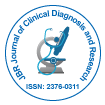Review Article
3D Ultrasound Assessment of the Uterus: Why an Accuracy Study for Mullerian Congenital Anomalies is not Feasible, while Screening Already is, and should be done
Tudorache S1, Florea M1, Dragusin R1, Patru LC1, Dragoescu A2, Iliescu DG1* and Cara ML3
1Department of Obstetrics and Gynecology, Prenatal Diagnostic, University of Emergency Hospital, University of Medicine and Pharmacy, Craiova, Dolj, Romania
2Department of Intensive Care and Pharmacy of Craiova, University of Emergency Hospital, University of Medicine and Pharmacy of Craiova, Craiova, Dolj, Romania
3Department of Public Health, University of Medicine and Pharmacy of Craiova, Craiova, Dolj, Romania
- *Corresponding Author:
- Iliescu Dominic Gabriel
Department of Obstetrics and Gynecology
University Emergency Hospital
University of Medicine and Pharmacy of Craiova, Craiova, Dolj, Romania
Tel: +4 0723 888773
Fax: +4 0251 502179
E-mail: dominic.iliescu@yahoo.com
Received Date: December 27, 2016; Accepted Date: January 28, 2017; Published Date: February 02, 2017
Citation: Tudorache S, Florea M, Dragusin R, Patru LC, Dragoescu A, et al. (2017) 3D Ultrasound Assessment of the Uterus: Why an Accuracy Study for Mullerian Congenital Anomalies is not Feasible, while Screening Already is, and should be done. J Clin Diagn Res 5:134. doi: 10.4172/2376-0311.1000134
Copyright: © 2017 Tudorache S, et al. This is an open-access article distributed under the terms of the Creative Commons Attribution License, which permits unrestricted use, distribution, and reproduction in any medium, provided the original author and source are credited.
Abstract
The review covers the recently published research regarding the assessment of congenital mullerian anomalies by means of 3-dimensional transvaginal ultrasound. It is a plea toward standardization, defining diagnostic criteria, specifying the diagnostic methods and screening on daily basis with 3D ultrasound for congenital uterine anomalies. Many debates surrounded the most appropriate approach of mullerian anomalies diagnosis. In congenital uterine anomalies 3D ultrasound is critical in reaching the correct diagnosis. Before the routine use of 3D scanning for uterine anomalies is recommended, research should be dedicated to reproducibility of the diagnosis of uterine abnormalities. “Volumetric criteria” for the diagnosis of female genital anomalies should probably be elaborated, because we still face the lack of agreement in regards to diagnostic standards. There is very limited information on the reproductive risk associated with an incidental diagnosis of congenital uterine anomaly and the true prevalence in general population in not known. In order to achieve this objective, a relatively large amount of data needs to be collected. Uterine anomalies being rare, this can only be achieved by establishing a wide international collaboration involving a large number of research centers. 3D ultrasound is the only diagnostic method available to facilitate such collaboration. By submitting the archived 3D volumes, the operator dependence, the subjective bias in the assessment of uterine morphology and the selection bias would be almost completely eliminated. 3D ultrasound represents the most major development in gynaecological ultrasound imaging, providing a unique, very different way of displaying ultrasound data.
